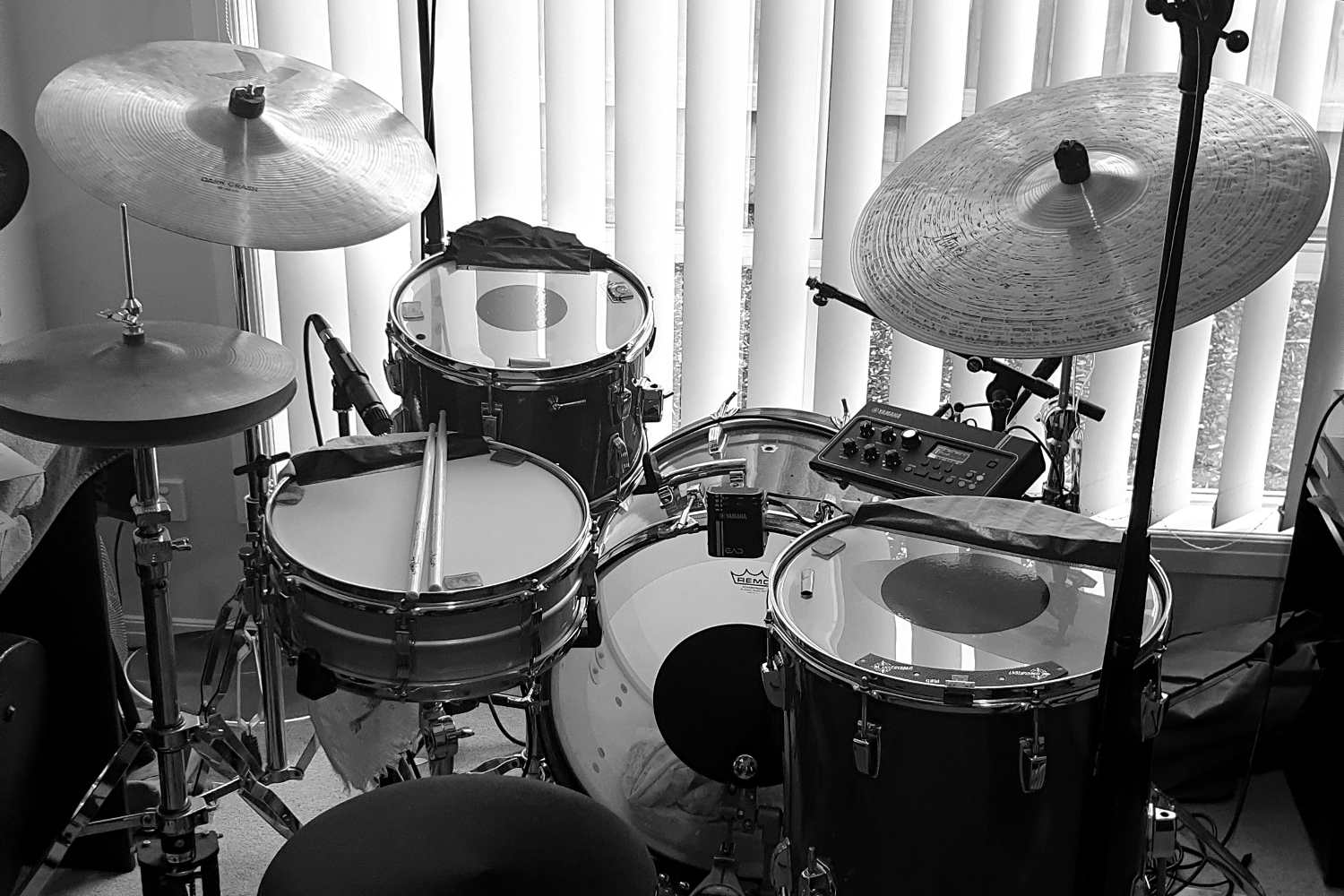Tips and tricks to know before stepping into the studio because as all drummers know, the studio is a completely different beast to the stage!
One of my first real studio recording sessions. It’s an original band and we’re heading in to lay down an EP. The studio? Small, home job with drapes and curtains over every wall, a tracking room, and a mixing room. Simple and effective. Not that I understood any of it; I was a rookie who owned minimal gear and was there to try and do my bit without embarrassing myself.
The learning curve however, started almost immediately when mics went on and we started getting sounds.
Read all the latest features, interviews and how-to columns here.
I was sound-checking my snare fresh off the previous gig (probably cranked high) – the only one I had for the studio recording session when the engineer comes in, listens, scratches his head for a minute and then springs into action. He swaps out my snare for a deeper, shoddy looking steel thing he seemingly digs up from the corner of the room and detunes it till it sounds, well, like rubbish. I continue to be dazed and confused as the engineer then goes over to the nearest wall and tears a small piece of curtain clean off. He scrunches the material up into a rough ball-like shape, grabs a thin piece of gaffa tape and slaps that thing on the snare towards the edge and dries out the tone. I still didn’t get it.
Listening back on the monitor however, I’m flabbergasted at how good it sounds. I reflected on the session and thought hard to myself – what is this magic and how did the engineer know how to do that?
We’ve all probably heard of so many studio drum hacks but until you’ve really been in the right situation, under mics with an engineer who knows their stuff, there can be so many things to learn.
Awfully vintage
Take the snare drum for example. It’s probably one of the best parts of the drum kit to experiment with under microphones. Yes, a great room is a factor, but for some reason, you can seemingly ignore the physics of tuning and still get a great, usable sound that will work – albeit maybe to suit some things better than others but let me explain.
I did a studio recording session where we used a vintage ’80s Tama snare drum that still had the original head. It looked completely trashed and it sounded positively awful – unusable in a standard, live setting. There were overtones galore, the snare wires were cactus and don’t think for a minute the lugs were all the same tension. I was tempted to ‘fix’ it, but the head was too old and fragile. Yet, the wide open, super raw nature of that drum under mics translated to a huge, lush sound when some EQ, compression, and reverb were applied. In fact, it was exactly what was needed for the track. So, try using any drum, leave it wide open and see what happens under the rest of the track. Could surprise you!
A splash of this and that
On the tonal contrary, I’ve experimented with tuning snares higher and then added varying amounts of dampening to get a desired effect – nothing new. Adding something like a splash cymbal on top of the head not only chokes the drum a little but raises the pitch drastically. Even if you’re not going for a ‘trap/drum and bass’ vibe, this is an interesting hack.
Most recently, a hack I’ve played around with is detuning one lug. Just one. All the way. This lowers the pitch of the drum but also dries out the sound without necessarily needing to reach for the gaffa. Want deeper and phatter? Detune the next lug. Strangely, this technique can even make the drum feel a little nicer to play with a little give in the head. An interesting one. This seems to also work reasonably well for the bass drum too – particularly on the batter head.
Towels
A great one I’ve played with a lot is using thin towels. Covering the toms completely will instantly yield an uber dry ‘70s vibe. The trick is to use thin material however, to allow some of the natural tone of the drum to come through. Taking this up a notch is experimenting with how much of the towel you have covering the drums. Covering the whole lot is easy but can rob you a little of depth – not surprising, I guess.
Another option is to take some gaffa, run it along one side of the towel and then play around with covering just the edge of the head, a little more etc. I usually find that if I’m nearing halfway on the head, I’ve gone too far. The gaffa kills resonance so it’s far more important to find the sweet spot with this technique. Get it right though, and you should be able to get a tone that is fat and dampened but controlled and full. The technique works on snares too.
Leave your hat on
Finally – cymbals. These are indeed magical beasts. A good set of overheads will capture the clock ticking on the wall in a studio recording, so they also capture every minute imperfection in a cymbal. Hi-hats for me are the worst in a recording session. Some hats are perfectly clean with a solid chick and no ping. This is ideal but sometimes, your favourite hats to use live can have other unwanted tones. I recorded a whole album for a well-known artist using the most ridiculous set of hats ever. They were the cheapest of the cheap that came free with a beginner drum set. They were so rubbish; they would invert if I pushed the pedal on the hat stand too hard. However, they were super thin, trashy, and had zero ping or overtones. Furthermore, they weren’t loud, so they didn’t bleed into every single microphone. The engineer loved them, so they stayed.
Don’t get locked out!
This is a handy one, and requires a set of keys or a similarly arranged pieces of metal that can rub, clink and shatter together. Open your hi-hat, dump the keys into the inside of the hi-hats bell, and enjoy the added sizzle of the keys inside the hi-hat. Similar to cymbal ‘Sizzlers’, custom made chains that respond in a similar way, your keys being placed into the bell offering a more controlled solution as they’ll move around less, and resonate less than a store-bought sizzler. If in doubt, try both!
The rule of thumb here is that there isn’t a rule of thumb. Sometimes, the weird and quirky just works. Sometimes, the solution to a sound could literally be something that isn’t even a drum related item – I’ve literally used a plank of timber as a snare drum for a studio recording. The key is to play around, ideally at home before you head into the studio. The real killer is, the hacks exist for everything in the recording space. Guitars, vocals, consoles, and so many for microphones and placement. It’s a truly wonderful thing.
For more drum recording tips, check out Roland’s guide here.







